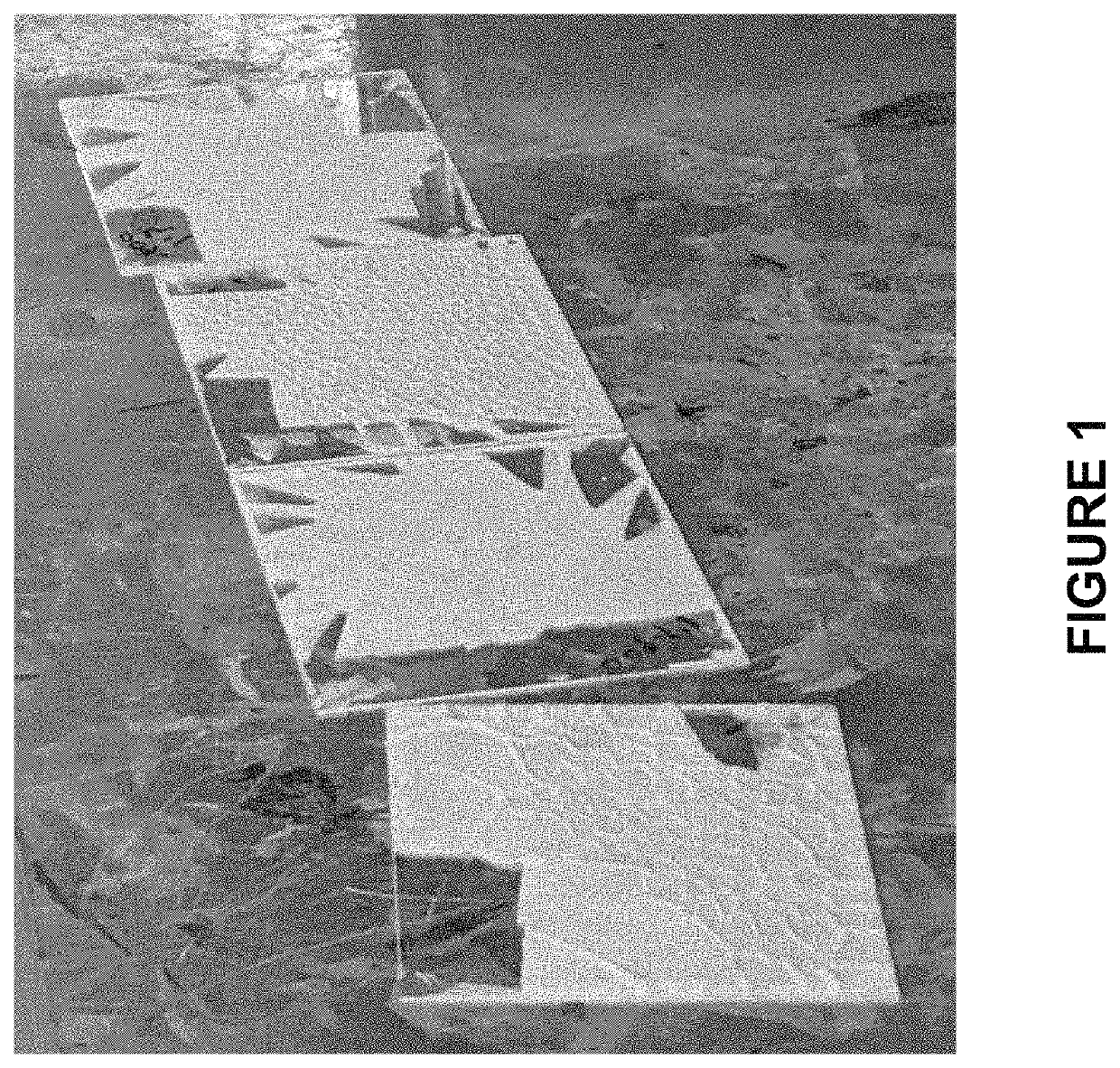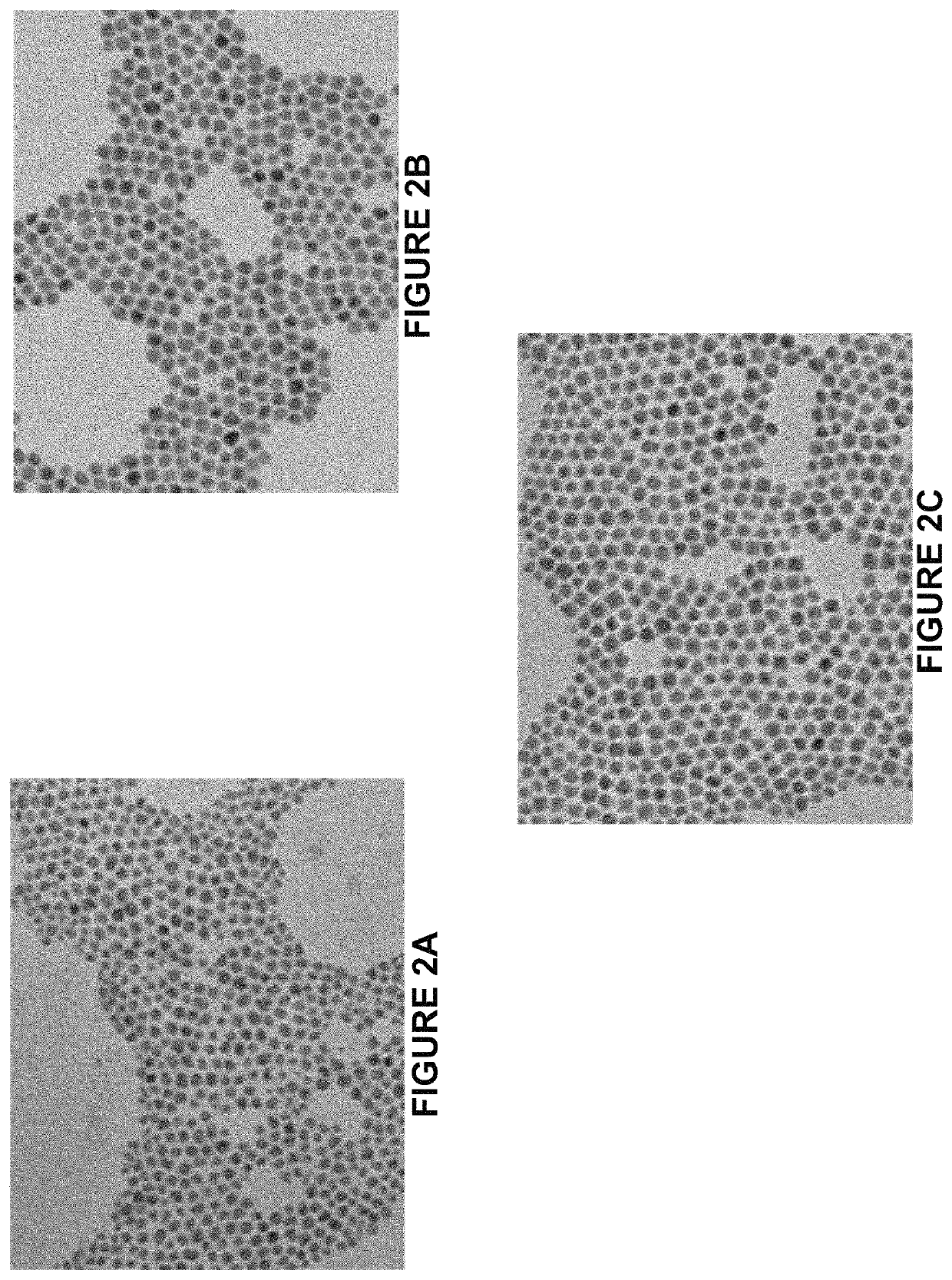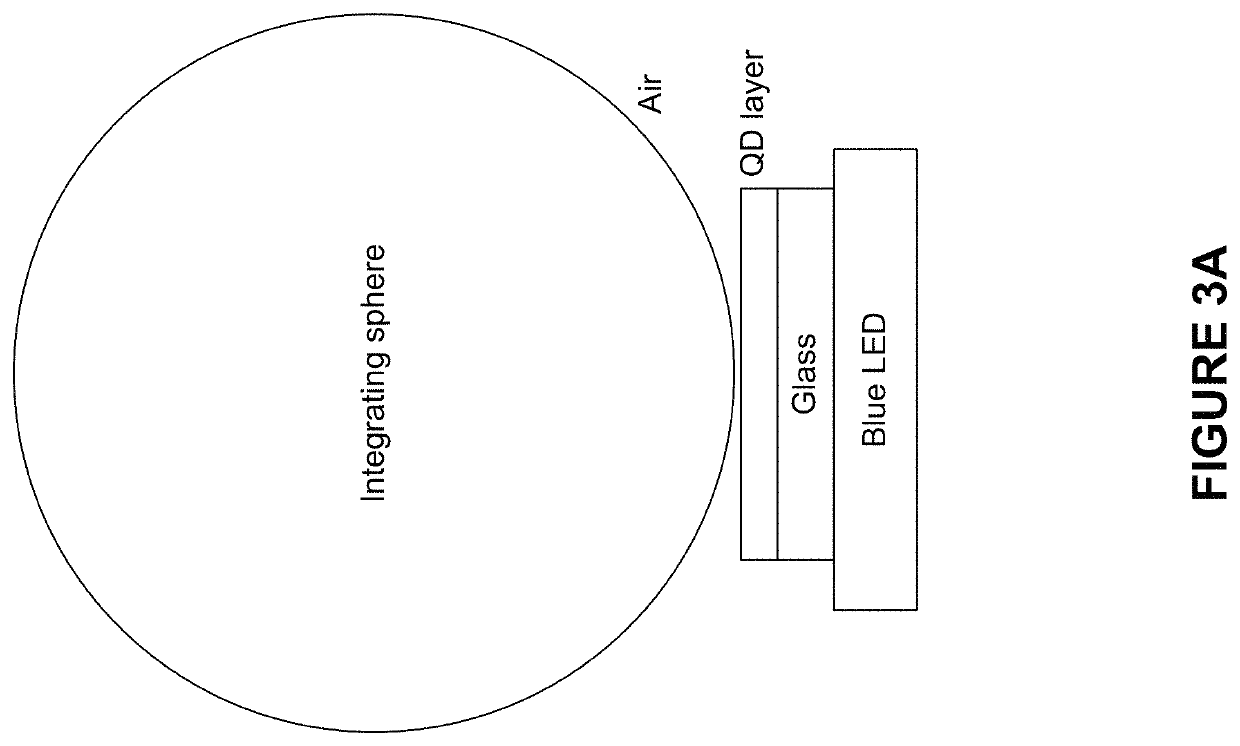Films comprising bright silver based quaternary nanostructures
a quaternary nanostructure and bright silver technology, applied in the field of nanotechnology, can solve the problems of poor absorption and reduced photon conversion efficiency
- Summary
- Abstract
- Description
- Claims
- Application Information
AI Technical Summary
Benefits of technology
Problems solved by technology
Method used
Image
Examples
example 1
Synthesis
[0328]Sample ID 1 was prepared using the following typical synthesis of AIGS cores: 4 mL of 0.06 M CH3CO2Ag in oleylamine, 1 mL of 0.2 M InCl3 in ethanol, 1 mL of 0.95 M sulfur in oleylamine, and 0.5 mL dodecanethiol were injected into a flask that contained 5 mL of degassed octadecene, 300 mg of trioctylphosphine oxide, and 170 mg of gallium acetylacetonate. The mixture was heated to 40° C. for 5 minutes, then the temperature was raised to 210° C. and held for 100 minutes. After cooling to 180° C., 5 mL trioctylphosphine was added. The reaction mixture was transferred to a glovebox and diluted with 5 mL toluene. The final AIGS product was precipitated by adding 75 mL ethanol, centrifuged, and redispersed in toluene. Sample IDs 2 and 3 were also prepared using this method. The optical properties of AIGS cores were measured and summarized in TABLE 2. AIGS core sizes and morphology were characterized by transmission electron microscopy (TEM).
[0329]
TABLE 2Ag / (Ag +SampleQYPWLFW...
example 2
structures with Ion Exchange Treatment
[0330]Sample ID 4 was prepared using the following typical ion exchange treatment: 2 mL of a 0.3 M gallium oleate solution in octadecene and 12 mL oleylamine were introduced to a flask and degassed. The mixture was heated to 270° C. A pre-mixed solution of 1 mL of a 0.95 M sulfur solution in oleylamine and 1 mL of isolated AIGS cores (15 mg / mL) were co-injected. The reaction was stopped after 30 minutes. The final product was transferred to a glovebox, washed with toluene / ethanol, centrifuged, and redispersed in toluene. Sample IDs 4-8 were also prepared using this method. The optical properties of the thus-produced AIGS nanostructures are summarized in TABLE 3. Ion exchange with gallium ions resulted in nearly complete band-edge emission. An increase of the average particle size was observed by TEM.
[0331]
TABLE 3OD450 / massSample IDPWL (nm)FWHM (nm)QY (%)(mL · mg−1 · cm−1)45163861—551736580.87652037531.04751438640.72851438651.15
example 3
alide and Trioctylphosphine Ion Exchange Treatment
[0332]A room temperature ion exchange reaction with AIGS nanostructures was conducted by the addition of a GaI3 solution in trioctylphosphine (0.01-0.25 M) to AIGS QDs and holding at room temperature for 20 hours. This treatment led to a significant enhancement of the band-edge emission summarized in TABLE 4, while maintaining substantially the peak wavelength (PWL).
[0333]Compositional changes before and after GaI3 addition were monitored by inductively coupled plasma atomic emission spectroscopy (ICP-AES) and energy-dispersive X-ray spectroscopy (EDS) as summarized in TABLE 4. Composite images of In and Ga elemental distributions before and after GaI3 / TOP treatment showed a radial distribution of In to Ga, thus indicating that the ion exchange treatment led to a gradient of a larger amount of gallium near the surface and a lesser amount of gallium in the center of the nanostructures.
[0334]
TABLE 4PWLFWHMQYBand-edgeAg / (Ag + In + Ga)In...
PUM
| Property | Measurement | Unit |
|---|---|---|
| diameter | aaaaa | aaaaa |
| FWHM | aaaaa | aaaaa |
| FWHM | aaaaa | aaaaa |
Abstract
Description
Claims
Application Information
 Login to View More
Login to View More - R&D
- Intellectual Property
- Life Sciences
- Materials
- Tech Scout
- Unparalleled Data Quality
- Higher Quality Content
- 60% Fewer Hallucinations
Browse by: Latest US Patents, China's latest patents, Technical Efficacy Thesaurus, Application Domain, Technology Topic, Popular Technical Reports.
© 2025 PatSnap. All rights reserved.Legal|Privacy policy|Modern Slavery Act Transparency Statement|Sitemap|About US| Contact US: help@patsnap.com



